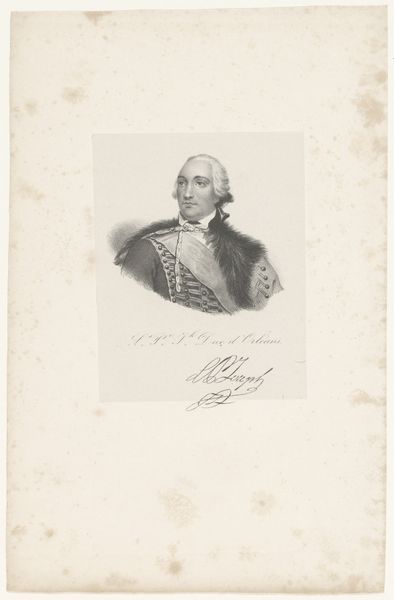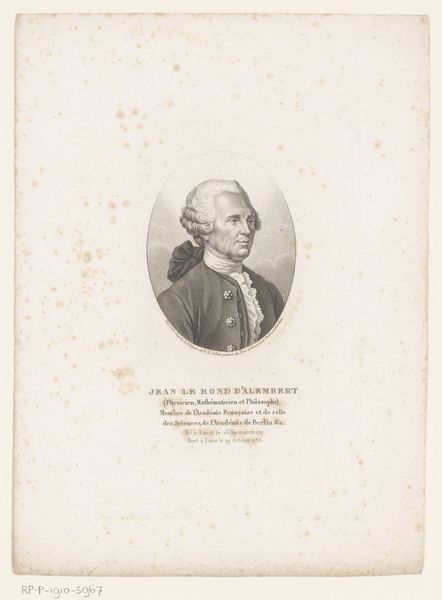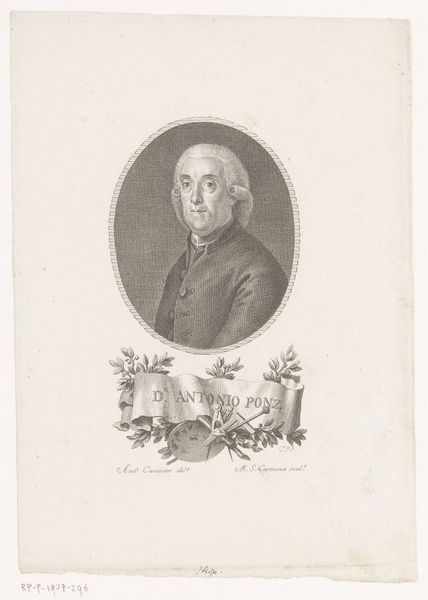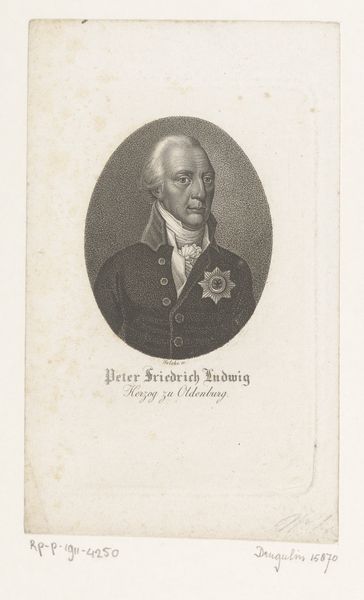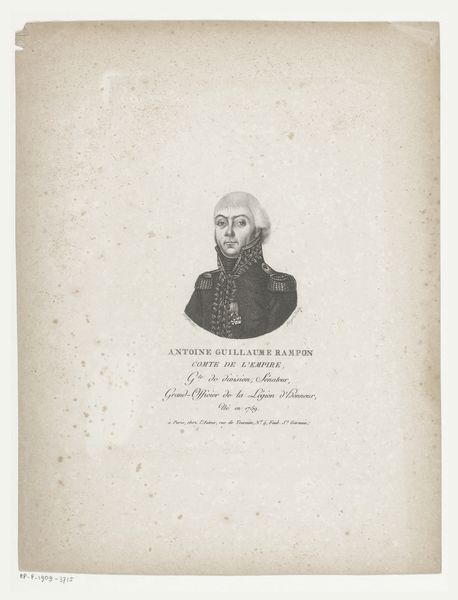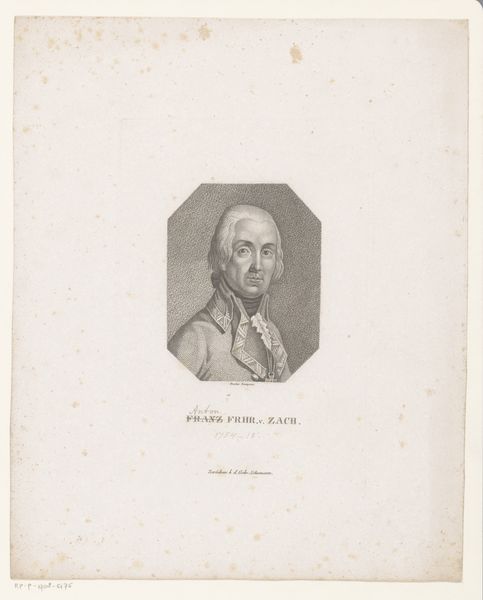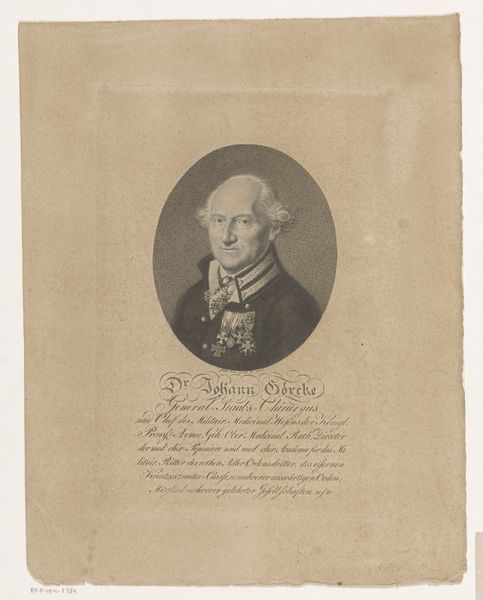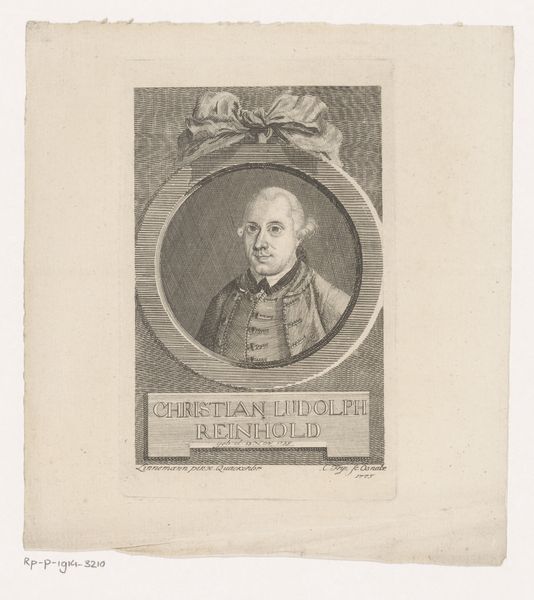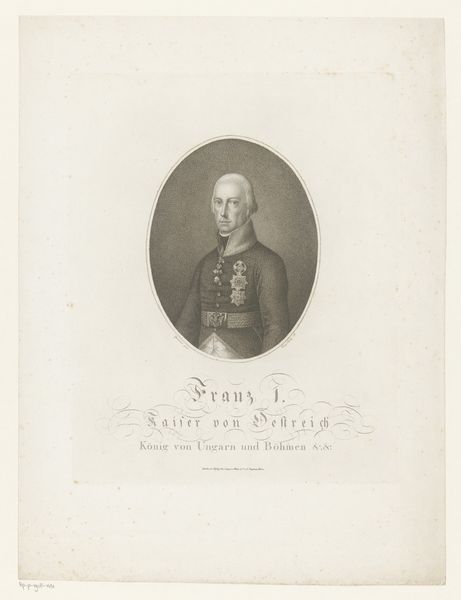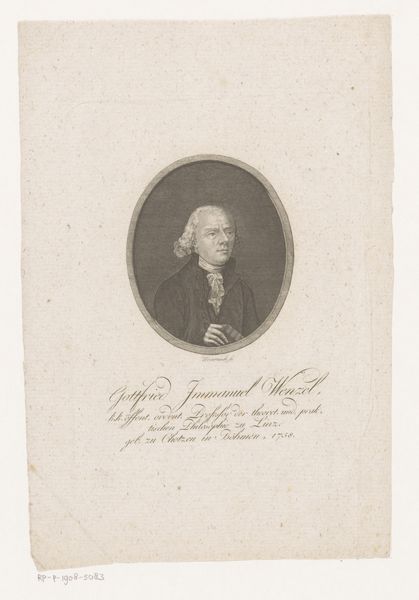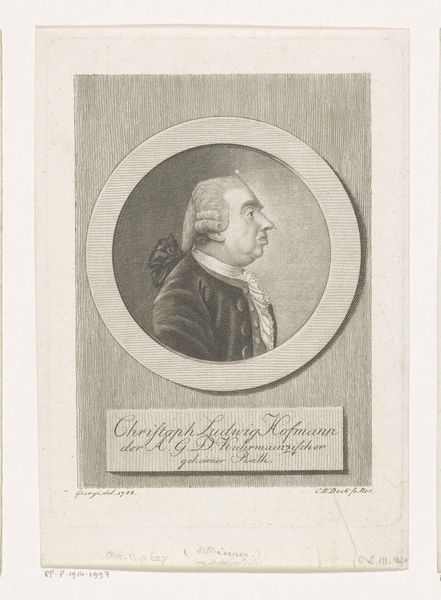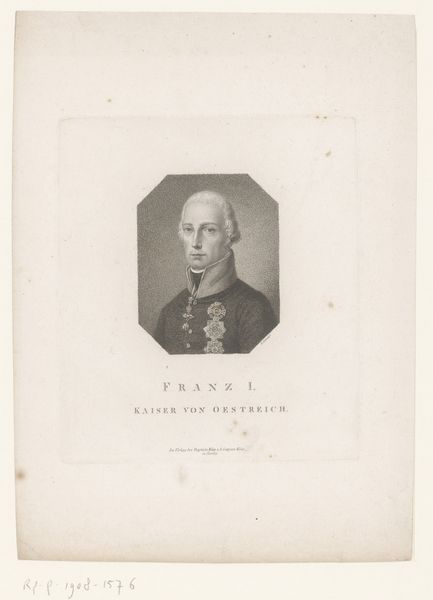
print, paper, engraving
#
portrait
#
neoclacissism
# print
#
old engraving style
#
paper
#
history-painting
#
engraving
Dimensions: height 162 mm, width 112 mm
Copyright: Rijks Museum: Open Domain
Curator: Friedrich Ludwig Neubauer created this print, titled "Portret van Frans II Josef Karel," sometime between 1777 and 1828. It's an engraving on paper currently held in the Rijksmuseum. Editor: The starkness of the monochrome and the rigid posture definitely project an air of detached authority. There is something both imposing and melancholic about this depiction of power. Curator: Yes, Neubauer's work aligns with Neoclassicism, where there is a revival of classical forms emphasizing order, reason, and balance, something frequently employed to elevate rulers like Franz. Those symbols served to reinforce an idea of an enduring, divinely ordained authority. Editor: And that very authority needs unpacking. This portrait exists during a tumultuous time with reverberations of the French Revolution challenging monarchical legitimacy across Europe. Doesn’t that make Franz’s presentation all the more telling? He's trying to hold onto power, presenting an image of stability when everything around him is shifting. The medals become less about honor and more about propaganda. Curator: Interesting. The medals are undoubtedly important, connecting him to tradition, the honor of leadership, almost functioning as talismans of power and protection. Editor: It's a careful construction, a performance. Look at the formality of his attire, almost a uniform, and his distant gaze—he's presenting the idealized version of an Emperor, distant and above the concerns of the common person. That carefully managed persona reinforces the hierarchical structure of society. Curator: True. But it also serves a psychological purpose. Images like these offered assurance and stability during times of massive social change, they served to soothe social anxieties. Editor: That feeling is palpable here. Knowing its historical context makes me question who is consoled by this image, and what narrative is prioritized by its display in collections like the Rijksmuseum. Curator: Seeing the cultural endurance of such potent imagery gives me pause, the same symbolic language continuing across centuries. Editor: I agree. Examining its social roots invites a more critical perspective towards historical representations of power, how rulers legitimize themselves in periods of crises, and how we, as viewers, either internalize or contest these narratives today.
Comments
No comments
Be the first to comment and join the conversation on the ultimate creative platform.
